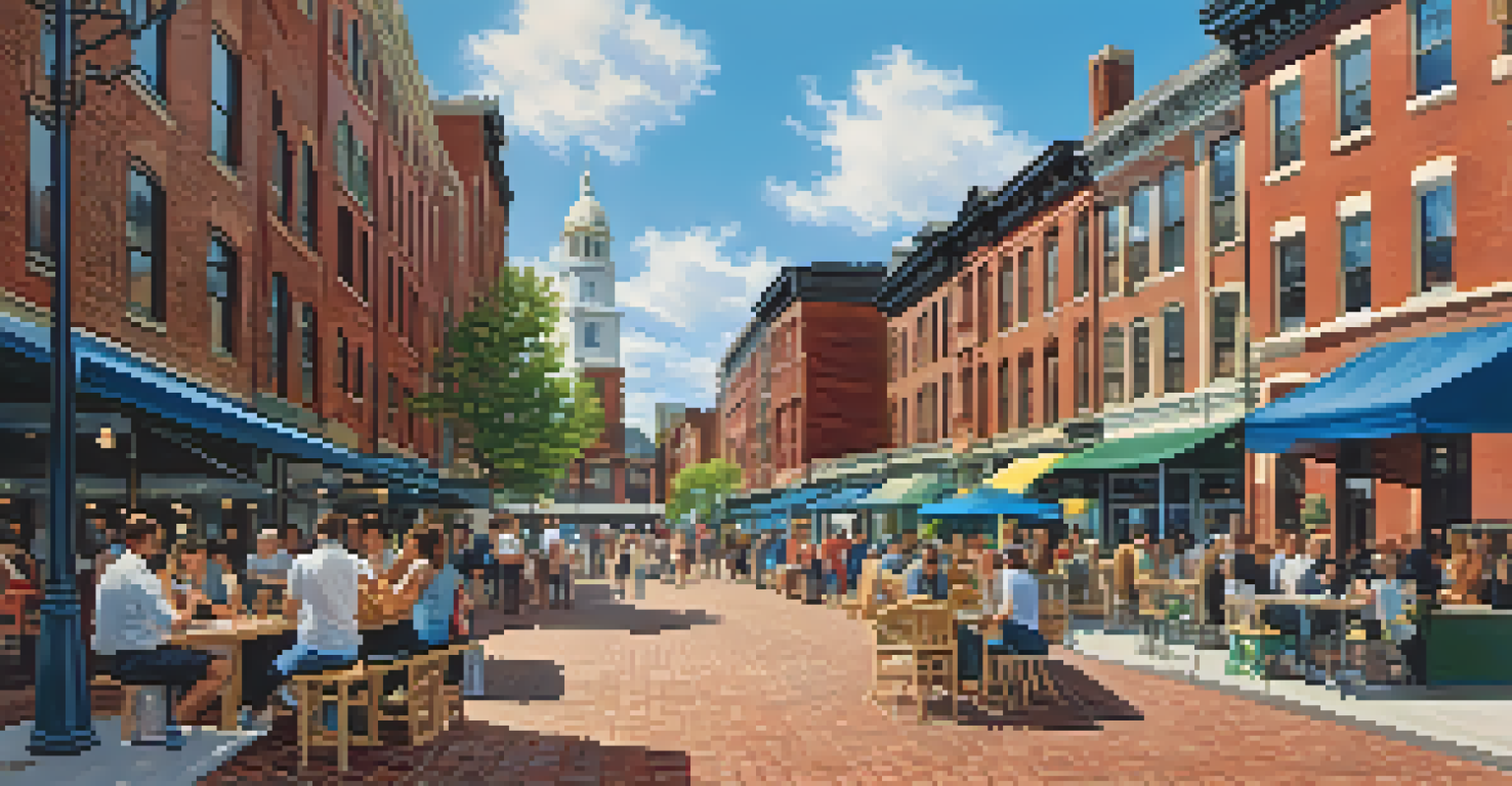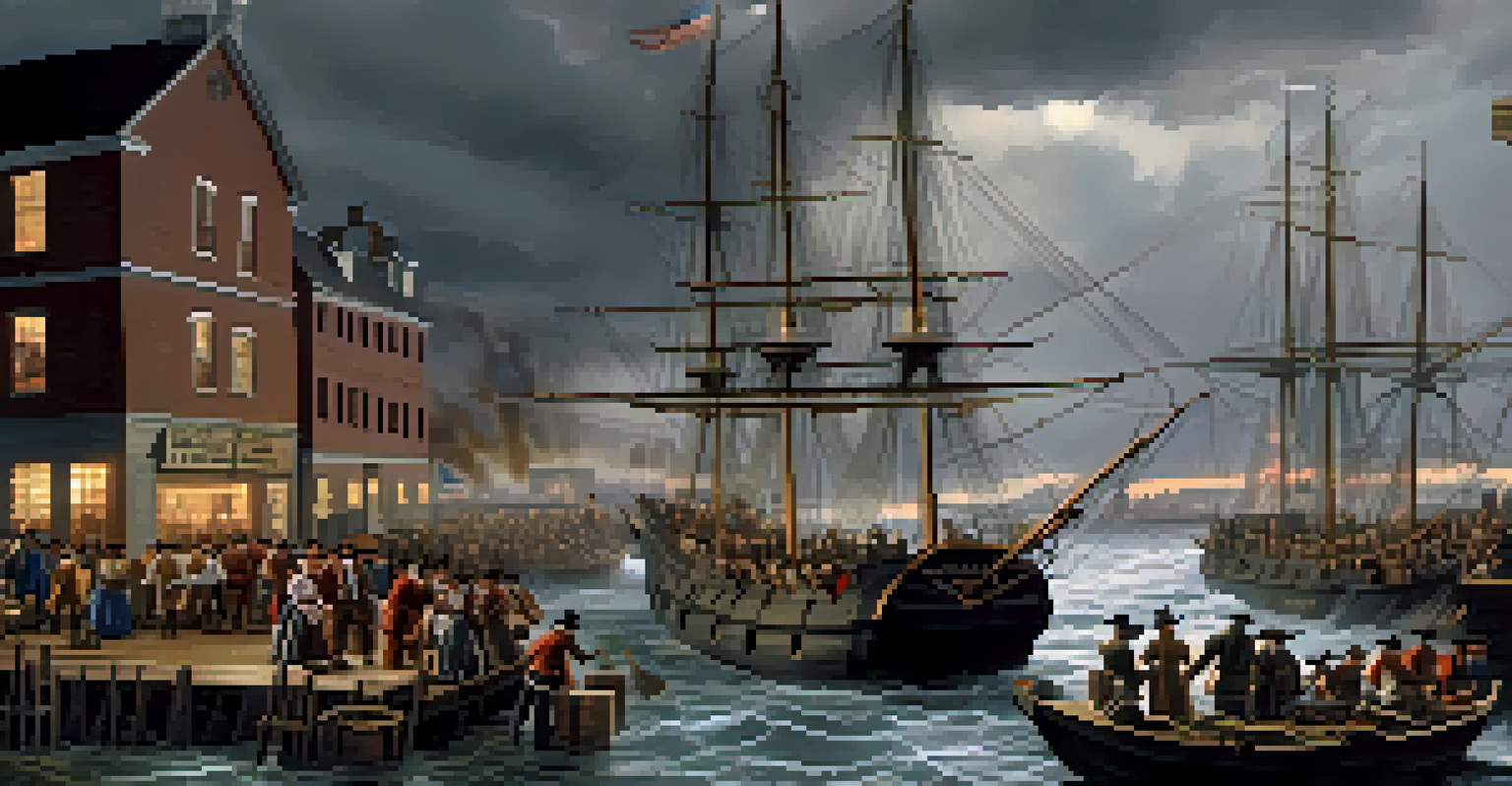Exploring the Historical Significance of Boston's Wharves

The Early Beginnings of Boston's Wharves
Boston's wharves trace their origins back to the early 17th century when the city emerged as a vital port. These docks became the lifeblood of the colony, facilitating trade with Europe and the West Indies. The construction of the first wharves was a response to the growing demands of commerce and the need for a safe harbor.
The sea is the universal sewer.
As the city expanded, these wharves played a crucial role in shaping Boston's economy. Merchants and shipbuilders flocked to the area, turning it into a bustling hub of activity. This period marked the beginning of Boston's transformation into a key player in global trade.
The wharves not only served as commercial centers but also reflected the evolving architectural styles of the time. Wooden structures gave way to brick and stone, illustrating both wealth and the city's resilience against the elements.
The Role of Wharves in the American Revolution
Boston's wharves were pivotal during the American Revolution, serving as staging grounds for protests and acts of defiance. The most famous event, the Boston Tea Party, took place right on these docks, highlighting their significance in the fight for independence. This act of rebellion against British taxation galvanized public sentiment and united the colonies.

The wharves also facilitated the movement of troops and supplies, making them strategic assets during the conflict. The bustling docks echoed with the sounds of ships being loaded and unloaded, as revolutionaries worked tirelessly to supply their cause. This period underscored the wharves' role not just as commercial centers but as symbols of resistance.
Wharves: Boston's Trade Lifeline
Boston's wharves were instrumental in the city's early development, serving as vital ports for trade and commerce.
As the revolution unfolded, the wharves became a meeting place for patriots, sharing ideas and strategies that would shape the future of the nation. Their historical significance was forever etched in the narrative of American independence.
Economic Growth and Industrialization in the 19th Century
The 19th century ushered in a wave of industrialization, and Boston's wharves adapted to meet new economic demands. As factories rose along the waterfront, the wharves were crucial for transporting raw materials and finished goods. This period saw a surge in immigration, further fueling the growth of the local economy.
If there is magic on this planet, it is contained in water.
With the introduction of steamships and railroads, the wharves transformed into dynamic centers of commerce. Goods moved faster than ever, connecting Boston to markets across the nation and the world. The wharves were a testament to innovation, showcasing the city's ability to adapt to changing times.
However, this rapid growth also brought challenges, such as overcrowding and pollution. The bustling activity at the wharves reflected the growing pains of a city at the forefront of industrial progress.
Cultural Significance of Boston's Wharves
Beyond commerce, Boston's wharves have played a crucial role in shaping the city's cultural identity. The docks have been a melting pot of different cultures, where immigrants arrived with hopes and dreams, contributing to the rich tapestry of Boston life. This diversity has influenced local cuisine, traditions, and community dynamics.
Art and literature have also drawn inspiration from the wharves. Writers like Nathaniel Hawthorne and artists captured the essence of the bustling docks, immortalizing their significance in American culture. These creative expressions continue to resonate today, highlighting the wharves' lasting impact on the arts.
Cultural Hub of the Revolution
During the American Revolution, the wharves became significant gathering places for patriots, influencing the course of history.
Events and festivals held at the waterfront celebrate this cultural heritage, bringing together communities and honoring the past. The wharves are not just historical sites; they are vibrant spaces that continue to inspire and unite.
Preservation Efforts and Modern Developments
In recent decades, there has been a growing awareness of the need to preserve Boston's wharves. As the city modernizes, efforts have been made to retain the historical integrity of these sites. Organizations and local governments have collaborated to restore and maintain the wharves, ensuring their stories are not forgotten.
Modern developments have also infused new life into the waterfront. Restaurants, shops, and parks now coexist alongside historic structures, creating a vibrant atmosphere that attracts residents and tourists alike. This blend of old and new reflects Boston's commitment to honoring its past while embracing the future.
These preservation efforts serve as a reminder of the wharves' significance, not only as historical landmarks but as active participants in the city's ongoing narrative. They provide a tangible connection to the past, allowing visitors to experience history firsthand.
Boston's Wharves Today: A Tourist Attraction
Today, Boston's wharves have transformed into a major tourist attraction, drawing millions each year. Visitors can stroll along the waterfront, enjoying scenic views and vibrant public spaces. The wharves serve as gateways to historical tours, boat rides, and cultural events, making them a must-see destination.
Local businesses thrive in this bustling environment, offering everything from seafood to souvenirs. The rich history and lively atmosphere create an inviting experience for tourists, blending education with entertainment. Each visit provides a glimpse into the past while celebrating the present.
Tourist Attraction and Legacy
Today, Boston's wharves attract millions of visitors, blending historical significance with modern cultural experiences.
These attractions not only boost the local economy but also foster a sense of community pride. The wharves have become a place where history, culture, and commerce intersect, reminding us of their enduring legacy.
Conclusion: The Lasting Legacy of Boston's Wharves
In conclusion, Boston's wharves are more than just docks; they are a testament to the city's rich history and cultural evolution. From their early beginnings to their role in the American Revolution, these wharves have shaped Boston's identity. They continue to be a vibrant part of the city, attracting visitors and locals alike.
As we explore the wharves today, we are reminded of the stories they hold—stories of trade, resilience, and community. Their preservation ensures that future generations can appreciate their significance and learn from the past.

The legacy of Boston's wharves is a reminder of the power of place in shaping history. As we move forward, let us cherish and celebrate the wharves that have played an indispensable role in Boston's journey.